How to Choose the Best Country for Your Schengen Visa Application – 5 factors to consider
When you’re planning a trip to Europe and need to apply for a Schengen visa, one of the first (and surprisingly tricky) questions is – what is the best country to apply through? Technically, it shouldn’t matter since the Schengen visa covers the whole Schengen area and visa rules are standard across the entire Schengen Zone.
However, the truth is, my experience applying through some embassies has just been easier than others. Things like appointment availability, processing times, and even approval rates can vary a lot depending on which country you apply through. These are the factors that can really impact your chances, peace of mind and overall ability to plan your Europe trip smoothly.
So, if your travel plans give you some flexibility on which country you visit first or spend most of your time, then being strategic about this choice could save you lots of stress.
In this post, I’ll walk you through 5 key factors I think about when planning Europe trips and subsequently choosing which Schengen country to apply through.
Before we dive in, an important clarification first:
Primary Destination & Point of Entry Rule
While this post will share factors that you may consider when deciding a Schengen country to apply through (if plans are flexible), you technically cannot just pick any country at random.
Schengen visa policies require you to apply at the main destination of your travel, that is where you’ll spend the longest time if visiting multiple countries. If you plan to spend an equal number of days in multiple countries, they you should apply through the country you’ll enter first. This is called the “primary destination” of the “point of entry” rule.
Personal Tip: Embassies Discourage and can penalize visa-shopping
Embassies discourage and can penalize visa-shopping . Visa shopping is where one applies for a visa at a consulate or embassy where they perceive to be easier or faster to get the visa, even if that country is not their primary destination or the longest intended stay in the Schengen area.
I do not recommend visa shopping as this can lead to serious consequences such as rejections, denied entry at the border or even future visa bans. It’s just not worth it. Always ensure that your visa application story matches your travel bookings/actual trip.
Schengen visa: What is the best country to apply through?
If you are like me and can adjust your travel plans accordingly, here are some factors you should keep in mind:
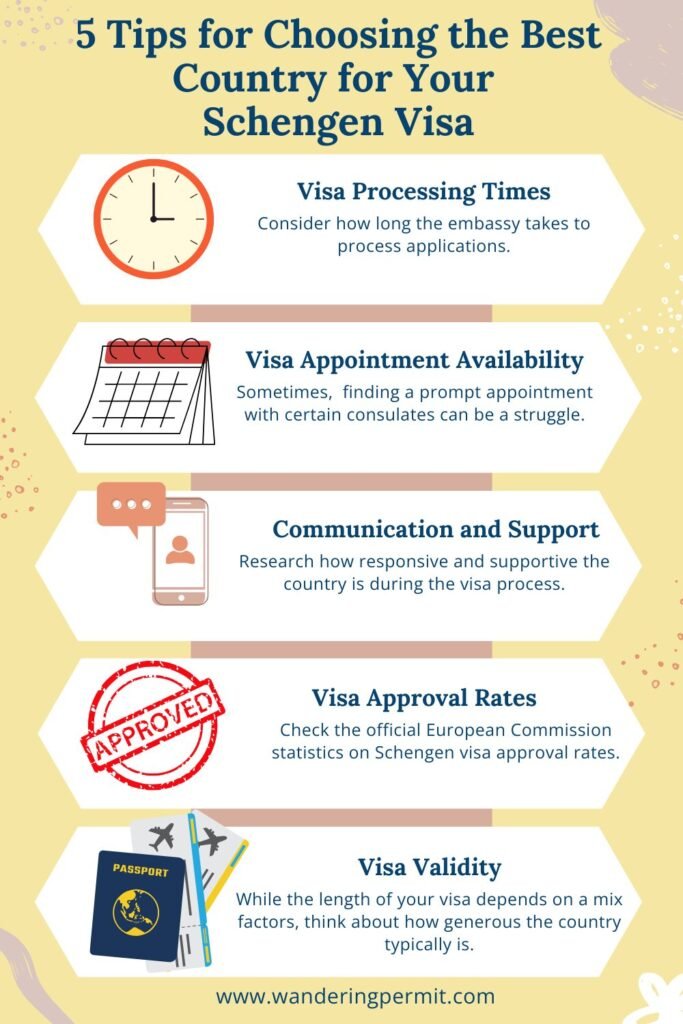
1. Visa Processing Times – How long does application processing take?
Not all Schengen embassies process visas at the same speed. I have had applications processed within days or a week, while other countries have taken up to 4 weeks or even months. This processing times can sometimes take even longer during peak travel seasons (like summer) or when additional documentation is required.
Officially, the normal processing time for a Schengen visa application is 15 days. However, this period may be extended to up to 30 days or 45 days if a more detailed examination of the application and/or additional documents are required.
If you’re working with a tight timeline or just need your passport back quickly, visa processing time is a huge factor to consider.
Check the country embassy website as they may show their latest processing time, but remember that real life experiences from recent applicants (Reddit and Facebook groups) can give you a much better idea of what to expect.
A country with visa appointments farther out but faster processing might be a smarter choice than one where you’ll wait forever and risk missing your travel dates.
2. Visa Appointment Availability – When is the earliest available appointment?
Even when you have your visa application filled out and all documents ready to go, sometimes getting a Schengen visa appointment fast is the biggest hurdle for many applicants.
A visa biometrics appointment is a required process of the application process. This is when you submit your documents and passport for processing, and have your photo and biometrics taken – either at the embassy or via a third-party visa centre like VFS Global, TLScontact, BLS Spain.
Again, not all embassies are created equally here. Some Schengen embassies are fully booked for months on end, while other release appointment slots weekly or every few days. The trick is, appointment availability changes based on the season, or even just how the third-party agency (VFS and TLS) operate.
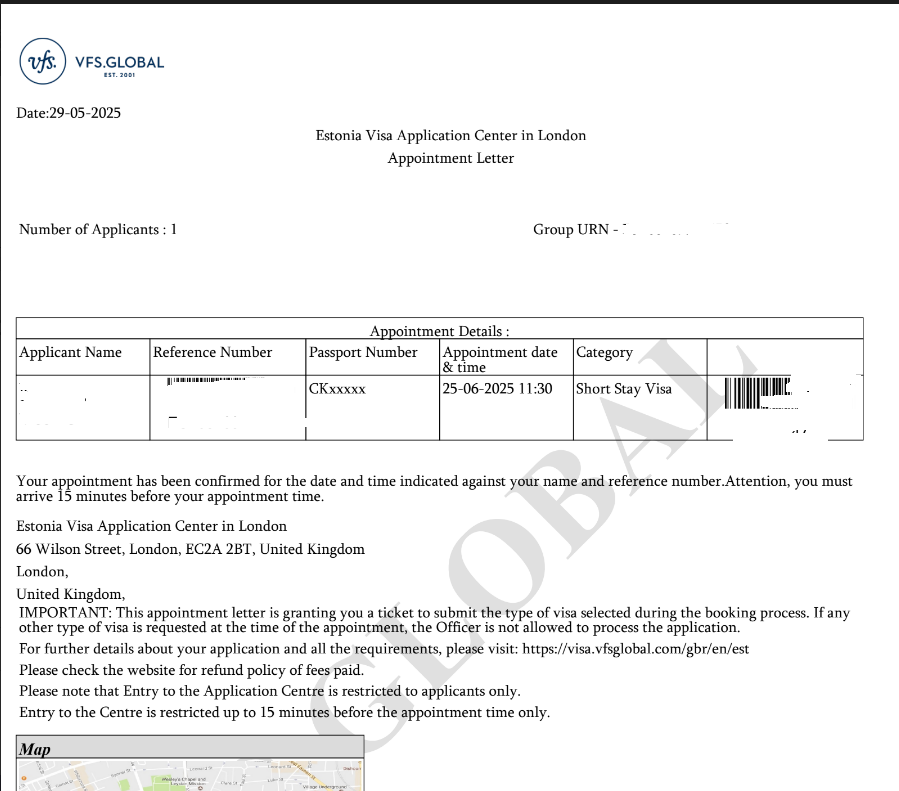
P.S: Curious how to find a Schengen visa appointment promptly? I have a specific post sharing tips on how to get a Schengen visa appointment faster including country choices, looking for cancellations and more.
Remember, if you’re flexible with your travel plans, it’s worth checking which countries have appointments open soon – I use Schengen visa appointment tracker for UK, USA, Canada, UAE – London, New York, Toronto, Dubai, Dublin, all cities! to see how appointment availability looks like.
Sometimes, going to a country you weren’t planning to visit yet might be your only option to get a visa quick and on time – and well, you get to experience one more country! Getting an appointment can be frustrating but knowing and planning this will save you a ton of panic (and money).
3. Embassy’s communication and support
One thing that doesn’t get talked about enough is how responsive and supportive an embassy is during the visa process. In some cases, once you submit you application, it feels like it disappears into a black hole – you don’t get updates, no one replies to your emails and you’re just left hoping for the best.
On the flip side, I’ve had experiences where embassies were proactive and helpful. For example, when I applied through Denmark, they actually called me to clarify some application details and explain their policies. When I helped a family member with an application via Austria, the embassy was surprisingly helpful during the appeal process after a rejection.
Having a direct communication channel—even just someone who responds to emails—can make a huge difference, especially when things get stressful. If you’re nervous or have a complicated case, choosing an embassy known for better applicant support might save you a lot of frustration.
4. Approval rates: What is the easiest Schengen visa to get?
Let me clarify, there is no ‘easiest’ country to apply for a Schengen visa. But being real, while all Schengen countries follow the same visa rules, how likely you are to be approved can feel very different from one embassy to another. Some embassies have a reputation for being more strict and particular than others.
The European Commission publishes figures showing number of visa applications and visas issued for every country that is a member of the Schengen area. In 2024, the countries with the highest Schengen visa approval rates were:
- Iceland (94%)
- Slovakia (89%)
- Italy (89%)
- Romania (88%)
- Switzerland (88%)
Hungary, Norway, Greece, Austria, and Luxembourg wrapped up the top ten. In contrast, the overall Schengen zone had an approval rate of 52.2%.
If you’re a first-time applicant or your travel history isn’t super strong, it’s worth applying through a country with a friendlier track record if your itinerary allows it. It could make the process a lot less nerve-wracking.
For my first Schengen visa, I had so much peace of mind since I applied via France – a much more popular tourist decision than other countries. Over time, I have up a stronger travel history including multiple longer-term Type D visas and residence permits in both Belgium and Denmark. Now, I have no hesitation or worry applying via countries that typically have a lower Schengen visa approval rate.
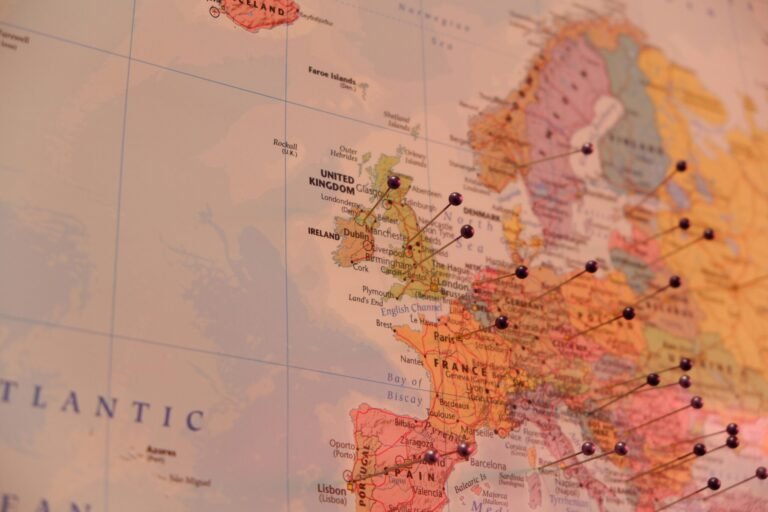
5. Visa Validity: How Generous is the Embassy?
Here’s a heads-up: the length of your Schengen visa depends on a mix of things — the information provided in your application about your intended trip, your travel history, your financial proof, and of course, the visa officer’s discretion.
If it’s your first Schengen visa, you might expect to get a visa that’s valid just for the days of your trip (or a few days extra). The more you build a strong visa history, the better your chances for longer, multiple-entry visas in future applications.
That said, some embassies are known to be more generous from the get-go, while others are super strict and will only issue visas for your exact travel dates, no matter how perfect your documents are.
For example, when I applied for my first Schengen visa via the France embassy in the US, my planned trip was just 1-2 weeks, but they gave me a 3-month multiple-entry visa. That kind of flexibility varies embassy by embassy. So, if you’re hoping for a bit of “extra breathing room” on your visa, it’s worth paying attention to the embassy’s general approach towards validity.
P.S: I have a detailed Schengen Tourist Visa Guide here sharing all my insights on visa length and validity.
Final Thoughts: Choosing the best Schengen country is strategic
At the end of the day, there’s no “perfect” or even “right” embassy. However, picking one that works for your timeline, your situation, and your travel plans makes life a whole lot easier. Sometimes it’s about finding the embassy with the soonest available appointment, other times it’s about giving yourself the best approval odds, or probability for a longer visa validity.
Visa applications are already stressful enough, so I encourage you to balance personal convenience and these application factors. Hopefully, these tips help you feel more in control of the process!
Remember, smart planning will make the process less stressful. If you’re still feeling stuck, check out my post on how to find Schengen visa appointments fast when everything feels booked up — I’ve been there, and I’ve got you.

About wandering permit
Hi, I’m Becky – a world traveller who has visited over 35+ countries on my ‘weak’ passport and successfully applied for tens of visas. I am Kenyan passport holder who has lived across the US, Europe (Belgium, France and Denmark) – and currently live in London, UK. On Wandering Permit, I share honest tips to help visa travellers navigate application processes with less stress. My goal is to help make travel planning easy!

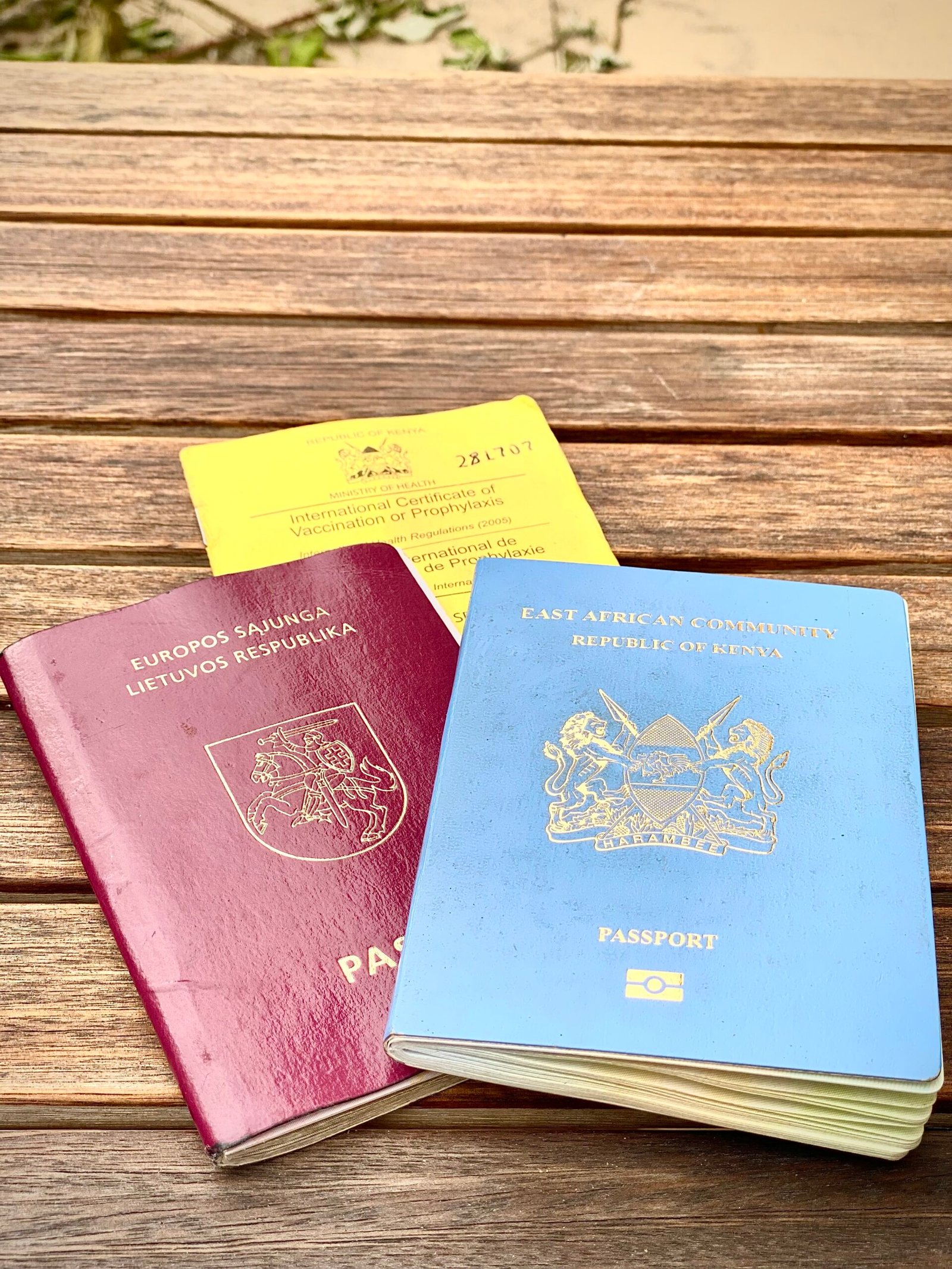
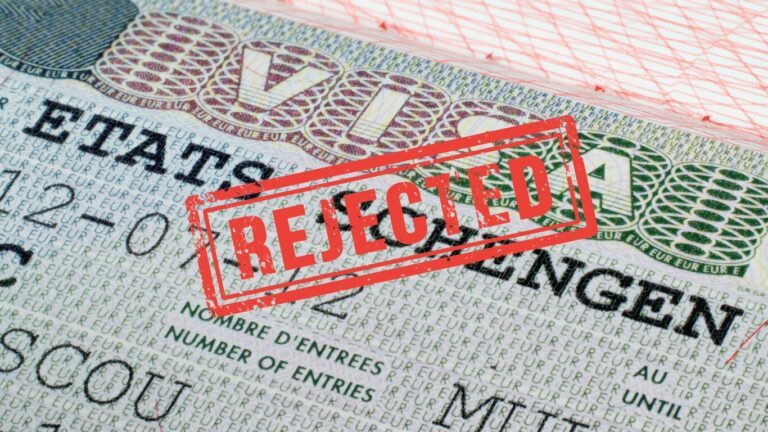
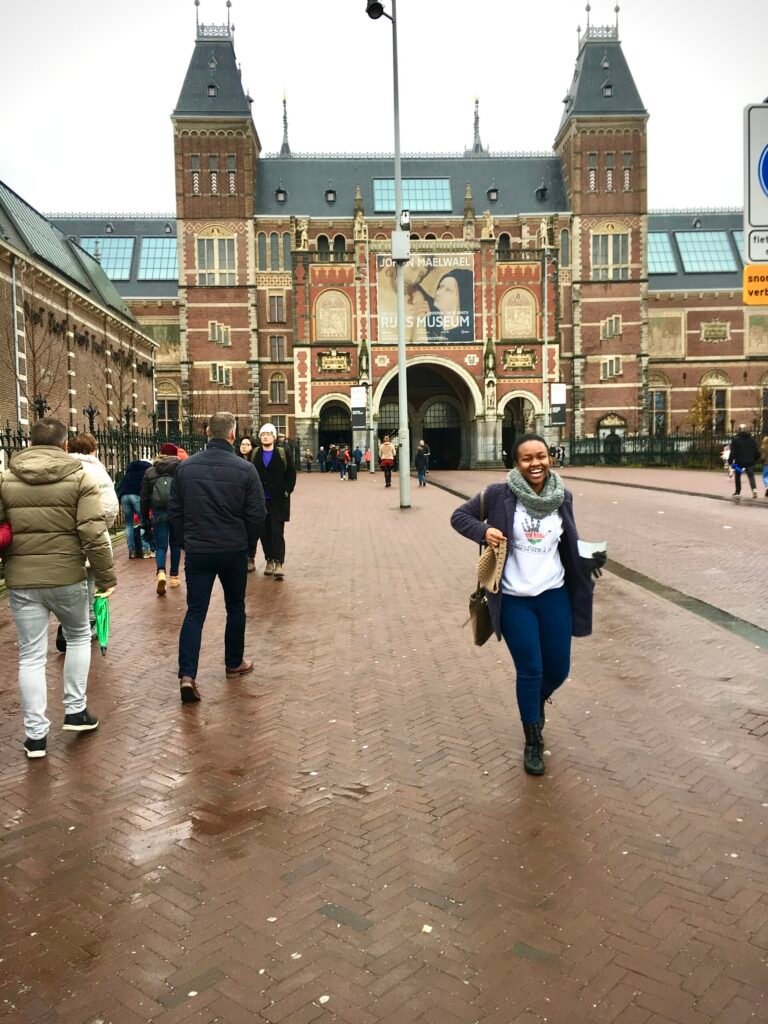
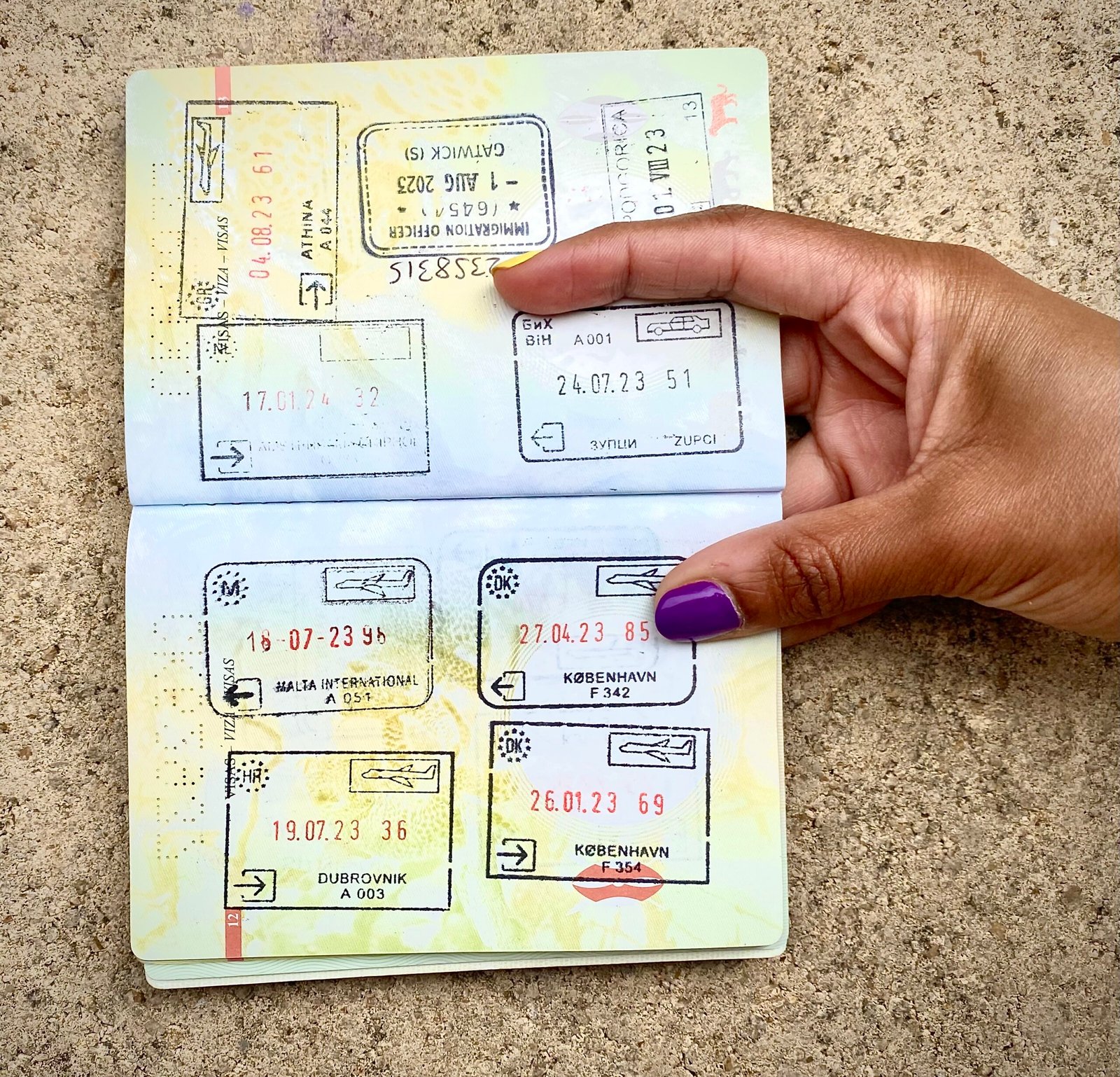
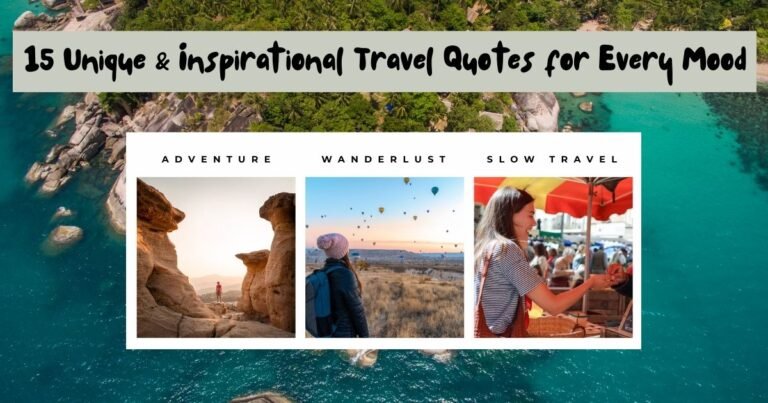
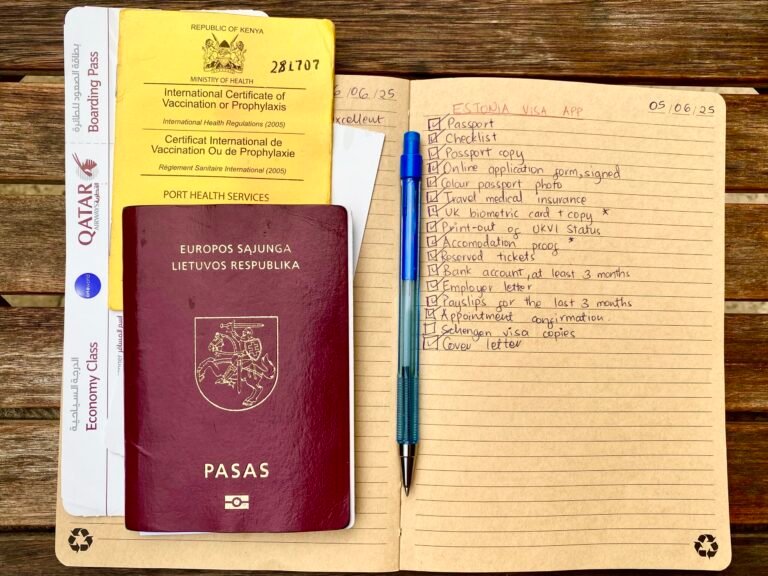
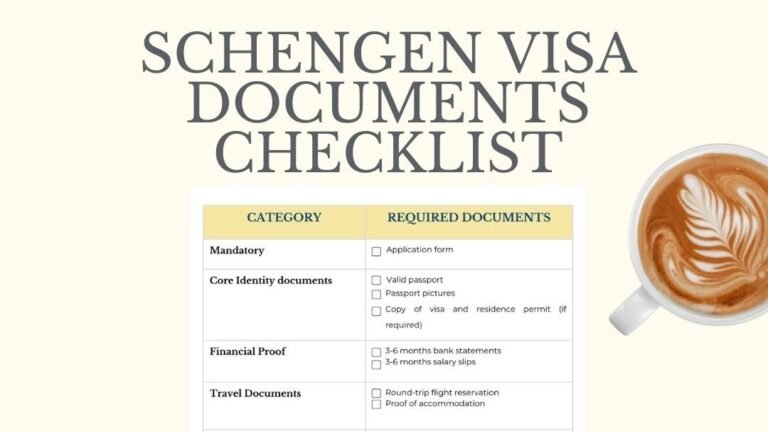
3 Comments